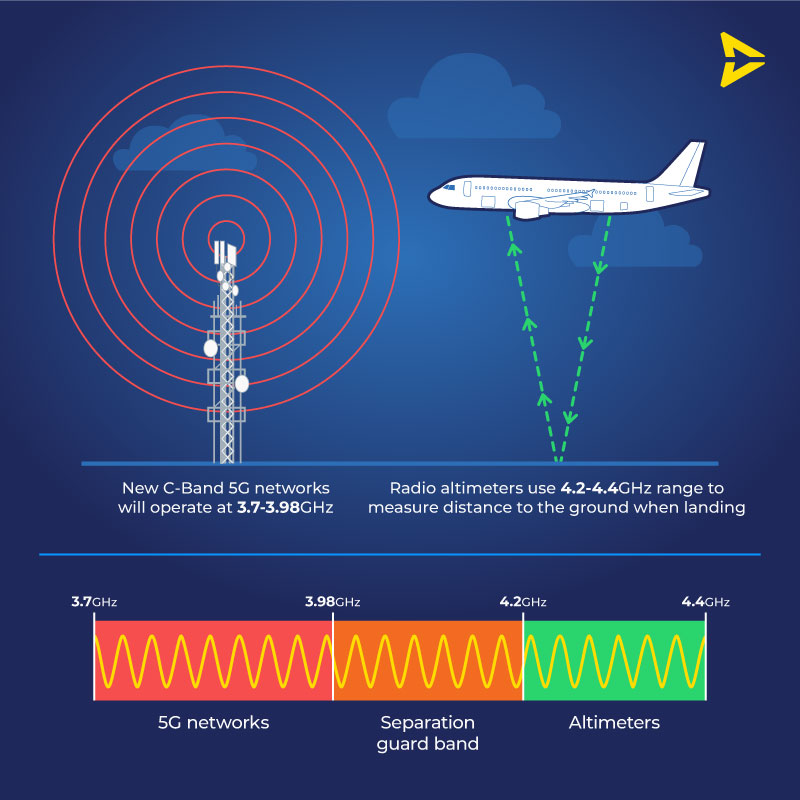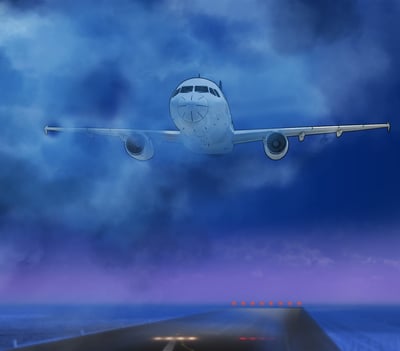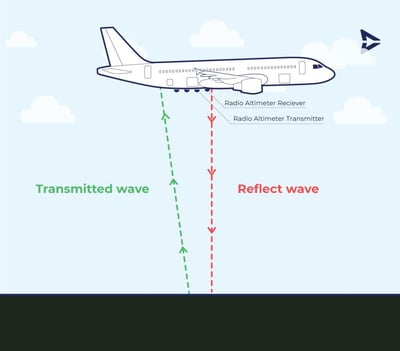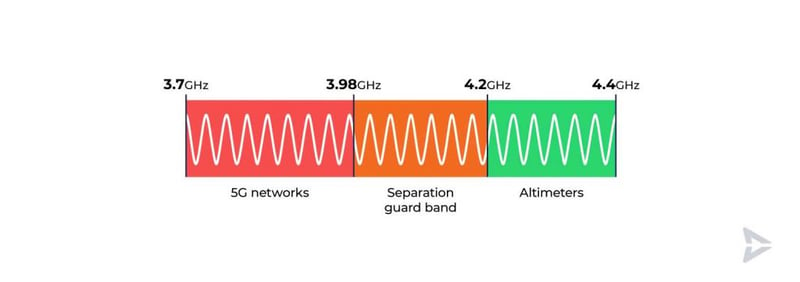
Last week in the US the 5G rollout was delayed near some airports due to a lot of safety concerns from the aviation industry, saying that the 5G could interfere with aircraft instruments such as the Radio Altimeter.
Radio altimeter and low visibility
The radio altimeter is measuring the height of the aircraft directly above the terrain and is highly accurate. It’s done by timing how long time it takes for the radio waves to reflect back to the aircraft from the ground. The Radio altimeter is used in LVO – low visibility operations, CAT II and III approaches. Click here to see Scandlearns’ LVO CAT II&III
 |
 |

Disruption Risk
In different countries, 5G is rolled out in different spectrums, power levels, and directions.
The new 5G network in the US is operating at 3.7 – 3.98 GHz, the Airplanes Radio Altimeter uses 4.2 – 4.4GHz. This leaves only 220 MHz of separation and creates concerns that this could interfere with the aircraft radio altimeter.
In Europe, the 5G is using the range of 3.4 -3.8 GHz which leaves more separation to the Radio Altimeter compared to the US operation.
On December 17, 2021 EASA | European Union Aviation Safety Agency Safety Information Bulletin (SIBNo. 2021-16) stated
“At this stage, no risk of unsafe interference has been identified in Europe.”
The 5G solution for now
FAA (Federal Aviation Administration) picked 50 airports with buffer zones to limit the 5G signal for 6 months. And also the 5G service is not switched on within 2 miles of some airports.
What are your thoughts about this?
Read more at https://www.faa.gov/5g
